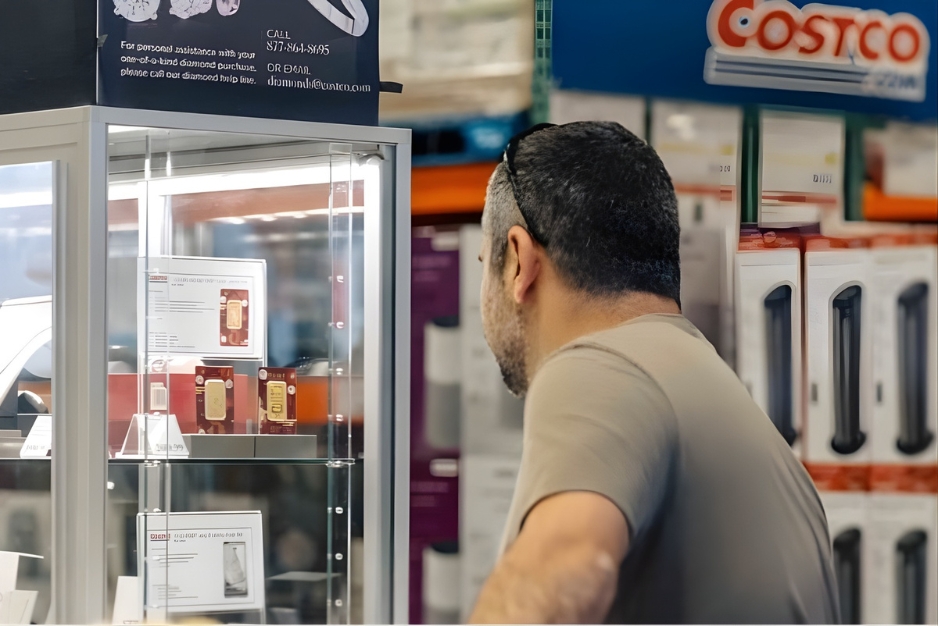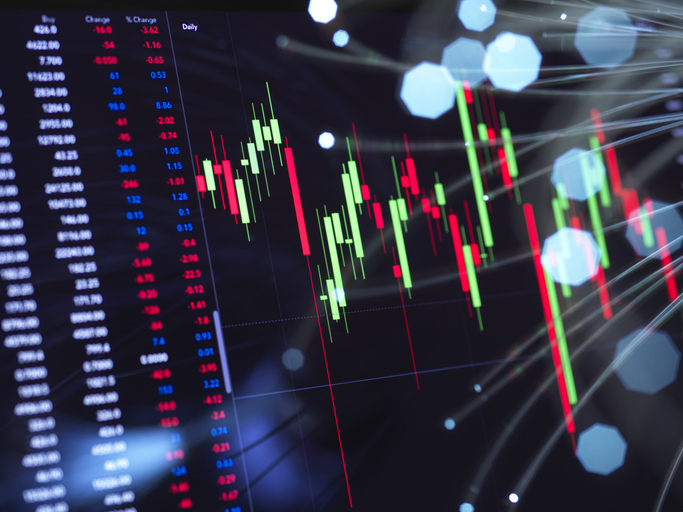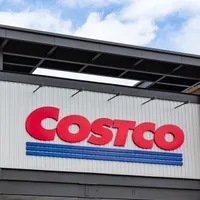Costco Gold Bars Keep Selling Out. Are They a Smart Investment?
How Costco's bullion program works, how to get the best deal and whether it makes sense for investors.


Gold is having a moment, and so is Costco.
The retail giant’s glittering 1-ounce gold bars have been selling out consistently online, with curious investors and everyday members alike clamoring for access. Costco now offers 24-karat gold, silver and platinum options through its website (and occasionally in warehouses). Some shoppers are picking up bullion the same way they stock up on paper towels and bottled water.
But what makes Costco’s gold bars even more intriguing isn’t just the price or the brand. It’s the potential to earn up to 4% in rewards through Costco’s membership and credit card programs. For savvy shoppers, this bonus can help soften the blow of premiums over spot price, which is especially valuable in today’s fluctuating gold market. Here’s how Costco’s bullion program works, how to stack your rewards strategically and when it might (or might not) make sense for investors.
From just $107.88 $24.99 for Kiplinger Personal Finance
Become a smarter, better informed investor. Subscribe from just $107.88 $24.99, plus get up to 4 Special Issues

Sign up for Kiplinger’s Free Newsletters
Profit and prosper with the best of expert advice on investing, taxes, retirement, personal finance and more - straight to your e-mail.
Profit and prosper with the best of expert advice - straight to your e-mail.
How Costco's bullion program works
Costco sells 1-ounce, 24-karat gold bars online and occasionally in select warehouses. Offerings often include bars from respected refiners such as PAMP Suisse and Rand Refinery, both featuring assay cards for authenticity. The bars are non-refundable and subject to purchase limits (typically two bars per membership).
Prices update in real-time based on the spot market and demand, and since gold purchases can’t be returned, this isn't a decision to take lightly.
Yet that hasn’t deterred customers: Costco CFO Richard Galanti noted that the retailer is selling “several hundred million dollars” in gold monthly, and the bars usually sell out within hours.
Costco’s current bullion offerings also include silver and platinum coins, but gold remains the headliner.
Understanding the rewards and membership tier angle
What truly sets Costco’s bullion program apart isn’t just the access to physical gold. It’s the layered reward strategy. Here's how it works:
- Executive Membership (annual fee: $120) gives members 2% cash back annually on eligible purchases, up to $1,000.
- Costco Anywhere Visa® Card by Citi offers up to 2% cash back on Costco.com purchases (plus more on categories like gas and travel).
When combined, members using both the Executive Membership and Costco Anywhere Visa can earn up to 4% back on their gold purchase.
For example, a gold bar priced at $2,000 with a 4% combined reward yields $80 in cash back, lowering your effective cost to $1,920. If Costco’s gold was priced at just 2% over spot, the rewards could essentially eliminate the premium altogether.
It’s worth running your own numbers with Costco’s bullion rewards calculator to estimate how much you might earn based on your membership and payment method.
Stack Social is offering a Gold Star Membership + $20 Digital Shop Card for the price of a $65 Gold Star membership.
It is also offering an Executive Gold Star Membership + $40 Shop Card for the price of a $130 Executive Gold Star membership. Memberships auto-renew each year until you cancel.
Pricing dynamics and investor benefits
Costco’s pricing tends to be fairly competitive in the physical bullion space at usually just 1% to 2% above the spot price, which is lower than many traditional dealers. However, the exact premium varies depending on market volatility, supply and brand.
For investors, the appeal is twofold. First, you gain physical ownership of bullion. You’re holding a tangible asset rather than paper or indirect exposure. Second, you benefit from Costco’s strong brand reputation, which means bar authenticity and packaging are handled by a trusted retailer, helping reduce concerns many first‑time bullion buyers face.
Third, compared to many online bullion sellers, Costco’s premium is relatively modest, which means your effective cost (especially when paired with reward incentives) may be more attractive.
Risks, downsides and what to watch
Despite the appeal, there are several risks and caveats to consider:
- Premiums fluctuate: While Costco often has lower premiums than competitors, it’s not always the cheapest option.
- Storage and security: Owning physical gold means you’ll need a safe or other secure storage. Insurance may be necessary too.
- Limited resale liquidity: Unlike gold ETFs, physical bars may be harder to sell quickly and might fetch below spot value due to dealer margins.
- Non-refundable: Once you buy a gold bar from Costco, there’s no returning it, even if the price drops tomorrow.
How to get the best deal if you go this route

If you decide to buy Costco gold, plan ahead so you capture the rewards and avoid surprises. Upgrade to an Executive Membership before you buy so the 2% annual reward will apply. The upgrade timing matters because that rebate is applied to qualifying purchases made while you hold Executive status.
Pair that membership with the Costco Anywhere Visa® Card by Citi for Costco.com purchases to stack card cash back on top of the 2% Executive benefit. Always run the numbers first (Costco’s bullion rewards calculator is a helpful tool) and compare the after‑rebate cost with other reputable dealers.
Inventory and pricing move fast, so monitor Costco’s bullion listings early in the morning when new inventory often appears, and be prepared to complete checkout quickly: bars frequently sell out within hours.
Remember that Costco’s gold is nonrefundable and subject to purchase limits, so confirm the SKU, refiner and assay card before you pay, and keep all documentation in case you sell later.
Also factor in storage, insurance and potential shipping costs; home safes, bank safe deposit boxes and third-party insured vaults all carry different price and accessibility tradeoffs.
When it makes sense and when it doesn’t
A Costco gold buy might make sense if:
- You’re already an Executive Member or plan to upgrade.
- You have the Costco Anywhere Visa or another cash-back credit card.
- You prefer owning physical gold and are okay with storage logistics.
- You’re holding mid-to-long term and want to reduce your cost with rewards.
- You value Costco’s brand trust and straightforward buying process.
It may not make sense if:
- You’re seeking short-term gains or plan to actively trade gold.
- You’d rather invest via ETFs or gold IRAs for better liquidity and convenience.
- You’re uncomfortable with the idea of storing physical bullion.
- You want exposure to gold without paying any premium over spot.
When a Costco gold buy makes sense
In the right context, Costco’s bullion program offers an attractive option for retail investors. The combo of physical gold, competitive pricing and up to 4% in rewards makes the purchase more financially savvy than it might initially seem.
But gold is still a commodity with market risks, and rewards don’t negate those risks. They just help lower your entry cost. Before buying, compare options, run the math using Costco’s rewards calculator, and ensure your gold-buying goals align with the realities of owning physical metal.
Related Content
Profit and prosper with the best of Kiplinger's advice on investing, taxes, retirement, personal finance and much more. Delivered daily. Enter your email in the box and click Sign Me Up.

Choncé is a personal finance freelance writer who enjoys writing about eCommerce, savings, banking, credit cards, and insurance. Having a background in journalism, she decided to dive deep into the world of content writing in 2013 after noticing many publications transitioning to digital formats. She has more than 10 years of experience writing content and graduated from Northern Illinois University.
-
 4 Great Tools to DIY Your Own Financial Plan
4 Great Tools to DIY Your Own Financial PlanSmart Savings Several tools picked out by Kiplinger that DIYers can use to make their own financial plan.
-
 The 7-Month Deadline That Sets Your Lifetime Medicare Premiums
The 7-Month Deadline That Sets Your Lifetime Medicare PremiumsUnderstanding Medicare enrollment is crucial, as missing deadlines can lead to permanent late enrollment penalties and gaps in coverage.
-
 Retirees Living in Portugal: You Need a Post-NHR Tax Strategy
Retirees Living in Portugal: You Need a Post-NHR Tax StrategyWhen your 10-year Non-Habitual Resident tax break ends, you could see your tax rate soar. Take steps to plan for this change well before the NHR window closes.
-
 4 Great Tools to DIY Your Own Financial Plan
4 Great Tools to DIY Your Own Financial PlanSmart Savings Several tools picked out by Kiplinger that DIYers can use to make their own financial plan.
-
 The 7-Month Deadline That Determines Your Lifetime Medicare Premiums
The 7-Month Deadline That Determines Your Lifetime Medicare PremiumsUnderstanding Medicare enrollment is crucial, as missing deadlines can lead to permanent late enrollment penalties and gaps in coverage.
-
 If You're a U.S. Retiree Living in Portugal, Your Tax Plan Needs a Post-NHR Strategy ASAP
If You're a U.S. Retiree Living in Portugal, Your Tax Plan Needs a Post-NHR Strategy ASAPWhen your 10-year Non-Habitual Resident tax break ends, you could see your tax rate soar. Take steps to plan for this change well before the NHR window closes.
-
 Stocks Chop as the Unemployment Rate Jumps: Stock Market Today
Stocks Chop as the Unemployment Rate Jumps: Stock Market TodayNovember job growth was stronger than expected, but sharp losses in October and a rising unemployment rate are worrying market participants.
-
 Should You Renew Your CD?
Should You Renew Your CD?With rate cuts impacting earnings, we examine if now is a wise time to renew CDs.
-
 The Delayed November Jobs Report Is Out. Here's What It Means for the Fed and Rate Cuts
The Delayed November Jobs Report Is Out. Here's What It Means for the Fed and Rate CutsThe November jobs report came in higher than expected, although it still shows plenty of signs of weakness in the labor market.
-
 Verizon’s 4-Line Phone Promo Offers Strong Value for Families Upgrading to Premium Devices
Verizon’s 4-Line Phone Promo Offers Strong Value for Families Upgrading to Premium DevicesFamilies can upgrade to top-tier smartphones for $25 a line with Verizon’s newest offer.
-
 Where to Store Your Cash in 2026
Where to Store Your Cash in 2026Set yourself up for success with these strategies.
